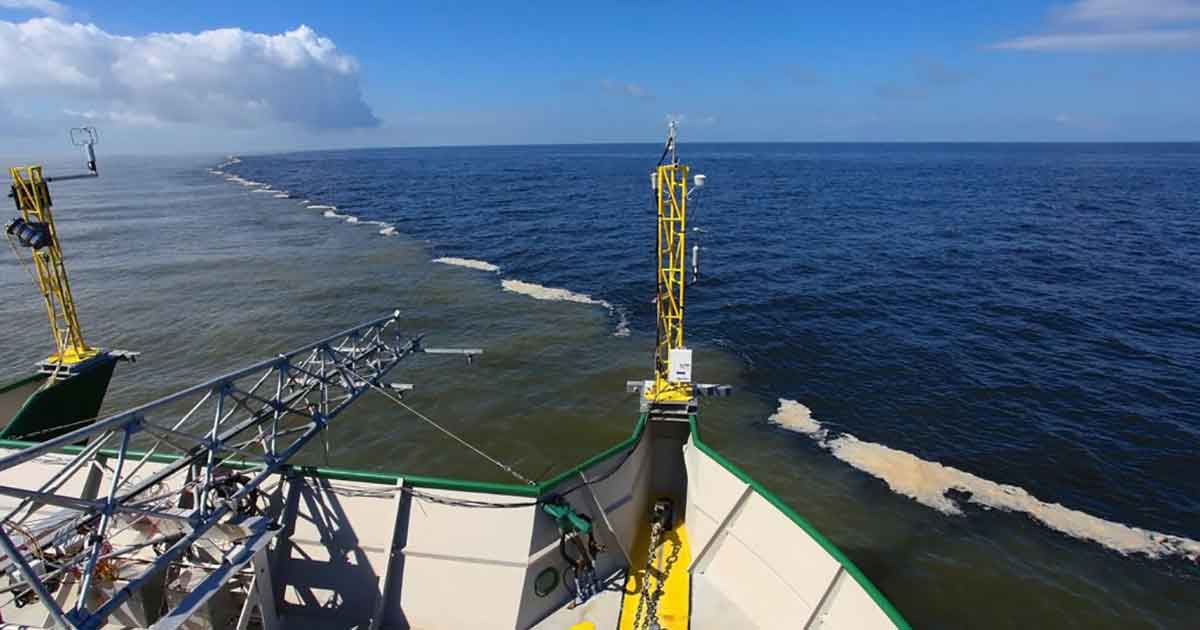Scientist John Taylor with the University of Cambridge analyzed simulations of small-scale fronts (
The ocean circulation can cause the front to sharpen, leading to long and narrow features with an abrupt change in temperature or salinity. Taylor observed that small-scale fronts can be associated with strong surface convergence and downwelling, which causes buoyant material to accumulate and then be pulled beneath the surface by strong downwelling currents. These results have implications for oil spill response and for monitoring microplastics in the ocean by helping forecast where floating material may be accumulating, either on or beneath the ocean’s surface.
The author published his results in the Journal of Physical Oceanography:
Buoyant material are particles that move upward relative to the surrounding water, such as bubbles, some types of phytoplankton, oil droplets, and microplastics. These floating particles play an important role in air–sea gas exchange, biogeochemical cycles, fisheries, and pollutant transport; and how the particles move depends upon what is happening just above, on, or just below the ocean’s surface.
During Deepwater Horizon, ocean models tracked how the oil spill was moving; but the spill’s location, magnitude, and depth revealed a need for improved transport modeling, including incorporating parameters for chaotic short-lived and small-scale surface flows or currents. Since then, research on small-scale ocean processes are helping to improve ocean transport predictions (for example, research on surface currents, how oil moves toward shore, and how riverine fronts influence oil transport).
This study focused on examining small-scale processes under controlled conditions to contribute to future work conducted under more realistic conditions. Study author John Taylor explained, “Fronts are ubiquitous features of the ocean surface, so this process is probably very common. I used very high-resolution numerical simulations to resolve features down to 2m in size. This was important to capturing the sharpness of the front and the strong downwelling along it. Because these processes happen on relatively small scales, ocean models may not capture this activity.”
Taylor observed that the downwelling of high concentrations of buoyant material enhances the vertical flux and can significantly modify the vertical distribution of the buoyant material. “Buoyant material can become concentrated in thin ribbons along fronts and a significant fraction of that might be beneath the surface at a given time. This work could help forecast where buoyant material will accumulate, with implications for oil spill remediation efforts.”
Data for this study are publicly available through the Gulf of Mexico Research Initiative Information & Data Cooperative (GRIIDC) at DOI:10.7266/N7T1520X and also here.
By Nilde Maggie Dannreuther, Gulf of Mexico Research Initiative



